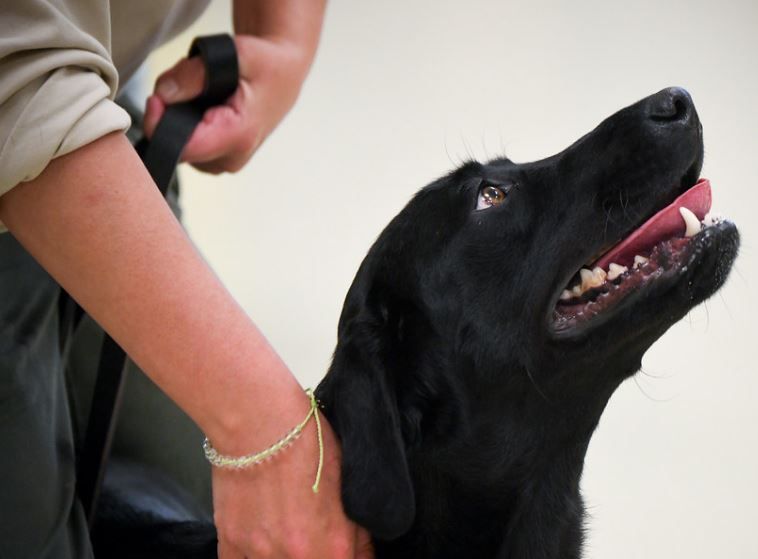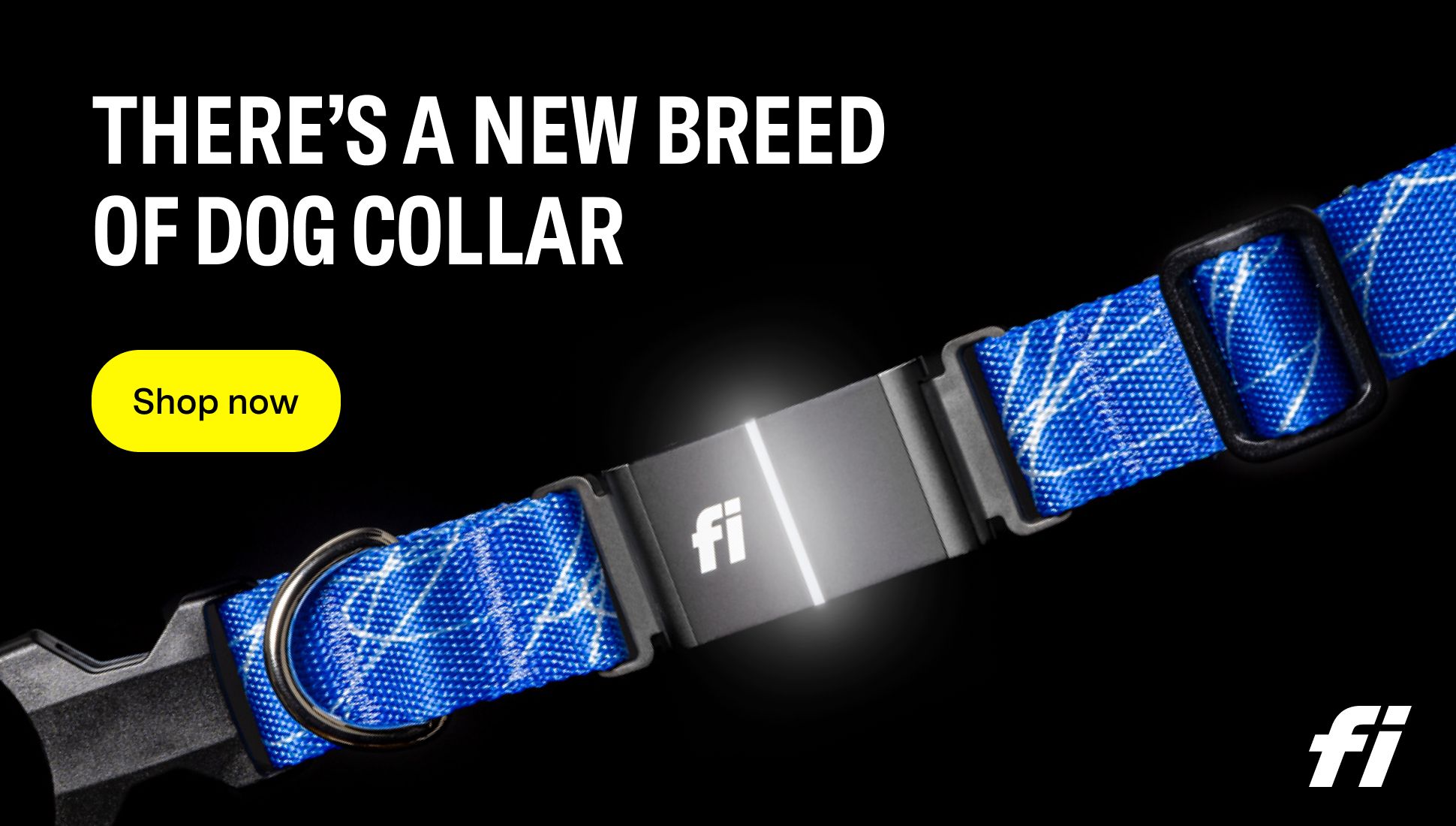Flea and tick collars are a popular solution for pet owners looking to protect their dogs from these pesky parasites. Understanding how long these collars remain effective is crucial in ensuring the continuous protection of your furry friend.
Firstly, it is important to grasp what flea and tick collars are and how they work. Flea and tick collars are designed to release active ingredients that repel and kill these parasites, preventing infestations and potential health issues.
The duration of effectiveness of dog flea and tick collars can vary based on several factors. These factors include the specific brand and type of collar, the concentration of active ingredients, and the environmental conditions in which the dog resides. Typically, the lifespan of flea and tick collars ranges from several months to a year.
When it comes to flea protection, the effectiveness of the collar can vary. Some collars offer protection for up to eight months, while others may have a shorter duration. It is essential to closely follow the manufacturer's guidelines and recommendations for replacing or renewing the flea collar to ensure continuous protection.
In terms of tick protection, the duration can also vary. Some tick collars provide protection for several months, while others may last up to six months. Again, following the manufacturer's instructions is vital for replacing or renewing the tick collar in a timely manner.

It is important to note that there are different types of flea and tick collars available in the market. These include standard collars, rechargeable or battery-powered collars, and natural or herbal collars. Each type may have different durations of effectiveness, so it is important to choose the right option for your dog's specific needs.
To maximize the effectiveness of flea and tick collars, certain measures can be taken. These include ensuring a proper fit and adjustment of the collar, regularly inspecting and maintaining the collar, and combining collar use with other preventive methods, such as spot-on treatments or oral medications.
Before making a decision, it is crucial to choose the right flea and tick collar for your dog. Factors to consider include your dog's size, age, breed, and any specific health conditions. Understanding the expected duration of protection offered by different collars can help you make an informed choice and ensure the well-being of your beloved pet.
What Are Flea and Tick Collars?
Flea and tick collars are specially designed products for dogs that provide protection against fleas and ticks. These collars contain specific ingredients that repel or kill these pests on contact. By releasing active ingredients onto the dog's fur and skin, these collars create a barrier of protection against fleas and ticks. The effectiveness of these collars can vary based on factors such as the brand, active ingredients, the dog's activity level, and environmental conditions.
It is important to note that the duration of flea protection may differ from tick protection. Some collars may be more effective against fleas, while others offer equal protection against both pests. To ensure maximum effectiveness, it is crucial to follow the manufacturer's instructions for replacing or renewing the collar.
Regular inspection and maintenance of the collar are also important to ensure its continued protection for your dog. When choosing a flea and tick collar, consider factors specific to your dog, such as size, age, and any health conditions. These collars are effective tools in protecting your dog from fleas and ticks.
Understanding their functionality and expected duration of protection will help you make an informed decision. Consult with your veterinarian and adhere to the manufacturer's instructions for the best flea and tick prevention plan for your furry friend.
How Do Flea and Tick Collars Work?
Flea and tick collars for dogs work by releasing active ingredients that repel or kill fleas and ticks on the dog's fur and skin. These collars, designed to be worn around the neck, are made with materials that can absorb and hold the active ingredients. Now let's delve into how flea and tick collars work to provide protection for your furry friend.
1. Active Ingredients: The effectiveness of flea and tick collars lies in their use of chemicals or natural ingredients. These ingredients, such as permethrin, pyrethroids, or natural oils like citronella, have the power to effectively repel or eliminate fleas and ticks. Slow and continuous release of these substances from the collar ensures long-lasting protection.
2. Contact and Residual Action: As the active ingredients are released from the collar, they come into contact with the fleas and ticks present on the dog's fur and skin. Upon contact, these ingredients either repel the pests, making it less likely for them to attach to the dog, or eliminate them altogether. Remarkably, some collars also possess residual action, meaning they continue the gradual release of active ingredients over time, providing ongoing protection against fleas and ticks.
3. Distribution and Coverage: The act of wearing the collar facilitates the distribution of active ingredients throughout the dog's fur and skin. This comprehensive coverage ensures that any contact between fleas or ticks and the dog's body results in their repulsion or elimination. In other words, all areas of the dog's body are shielded from these pesky parasites.
4. Duration of Effectiveness: Flea and tick collars offer varying durations of effectiveness, depending on the specific product. Some collars provide protection for up to 8 months, while others require more frequent replacement or renewal. It is vital to adhere to the manufacturer's guidelines and recommendations for the particular collar in use to ensure optimal protection.
To sum it up, flea and tick collars for dogs function through the gradual release of active ingredients that repel or eliminate fleas and ticks on the dog's fur and skin. These collars offer continuous protection to prevent infestations and safeguard your beloved pet from these bothersome pests.
Duration of Effectiveness of Dog Flea and Tick Collars
When it comes to dog flea and tick collars, understanding their effectiveness is crucial. In this section, we'll delve into the duration of their effectiveness, exploring key factors that might influence it. From environmental considerations to the typical lifespan of these collars, we'll uncover what determines how long they keep our furry friends free from pesky fleas and ticks. So, let's dig in and discover the ins and outs of the duration of effectiveness of dog flea and tick collars!

Factors Affecting Duration
The duration of effectiveness of dog flea and tick collars can be influenced by several factors affecting duration. These factors include the type of collar, the active ingredients, and external conditions.
| Factor | Description |
|---|---|
| Type of Collar | Different types of flea and tick collars have varying durations of effectiveness. Standard collars typically provide protection for a certain number of months, whereas rechargeable or battery-powered collars may have a longer lifespan. |
| Active Ingredients | The active ingredients present in the collar play a crucial role in determining its effectiveness. Some ingredients may provide protection against both fleas and ticks, while others may specifically target either fleas or ticks. |
| External Conditions | The surrounding environment and the dog's activities can affect the durability of flea and tick collars. Exposure to water, sunlight, and excessive scratching or rubbing may reduce the collar's efficacy. |
It is important to follow the manufacturer's instructions regarding the duration of the collar's effectiveness. Some collars may need to be replaced or renewed after a certain period of time, while others may offer continuous protection throughout their lifespan.
To maximize the effectiveness of flea and tick collars, ensure they fit properly and are adjusted according to the manufacturer's guidelines. Regular inspection and maintenance, such as checking for any signs of wear or damage, is also essential. Combining collar use with other preventive methods, such as regular grooming and environmental control, can further enhance the protection against fleas and ticks.
When choosing the right flea and tick collar for your dog, consider your dog's specific needs and consult with your veterinarian. Understanding the expected duration of protection provided by different collars can help you make an informed decision for your pet's well-being.

Typical Lifespan of Flea and Tick Collars
The typical lifespan of flea and tick collars can vary depending on various factors such as the active ingredients, brand, and usage. Here are some important points to consider:
- Active ingredients: Flea and tick collars contain different active ingredients that help repel and eliminate these pests. The duration of effectiveness will depend on the specific active ingredient used in the collar.
- Brand and quality: Not all flea and tick collars are created equal. Some brands may use higher-quality materials and ingredients, resulting in a longer lifespan for the collar.
- Usage and exposure: The duration of protection provided by a flea and tick collar can be influenced by how often the collar is worn and the level of exposure to pests. For example, if your dog spends a lot of time outdoors in heavily infested areas, the collar may need to be replaced more frequently.
- Environmental factors: External factors such as humidity, temperature, and water exposure can also affect the lifespan of a flea and tick collar. Some collars may be more resistant to these factors than others.
- Maintenance and care: Proper maintenance and care can help prolong the lifespan of a flea and tick collar. Regularly inspecting the collar for any signs of damage or wear, cleaning it as instructed by the manufacturer, and making sure it fits securely can all contribute to its longevity.
Remember, it is important to follow the manufacturer's guidelines and recommendations for replacing or renewing flea and tick collars to ensure optimal protection for your dog.
How Long Do Dog Flea Collars Work?
Duration of Flea Protection
When selecting a flea and tick collar for your dog, it is crucial to consider the duration of flea protection. Here are some essential points to keep in mind:
- The duration of flea protection varies based on the brand: Different flea collars offer a range of protection durations. Some collars provide protection for up to 6 months, while others may only be effective for 3 months. To determine the specific duration of flea protection, it is essential to carefully read the product label or consult the manufacturer.
- Environmental factors can affect the effectiveness of a flea collar: Certain environmental conditions, such as heavy rainfall or exposure to water, can diminish the collar's effectiveness. Therefore, it is important to consider the climate and environment in which your dog spends its time.
- The activity level of your dog also plays a role: The duration of flea protection can be influenced by your dog's activity level. Highly active dogs that spend a significant amount of time outdoors may need more frequent collar replacements compared to less active dogs.
- Follow the manufacturer's recommendations for replacement or renewal: To ensure optimal flea protection, it is crucial to replace or renew the flea collar as recommended by the manufacturer. Using an expired or worn-out collar may result in reduced effectiveness and inadequate flea protection for your dog.
- Regularly inspect your dog for signs of flea infestation: Even when using a flea collar, it is recommended to regularly inspect your dog for any signs of fleas. While a flea collar provides protection, some fleas may still be present. If you observe any signs of fleas, additional flea treatment methods may be necessary.
By taking into account these factors and understanding the duration of flea protection, you can make an informed decision and select the right flea collar for your dog, ensuring their protection against fleas.
When to Replace or Renew the Flea Collar?
Knowing when to replace or renew your dog's flea collar is essential for ensuring its continued effectiveness. Here are some key considerations:
- Manufacturer's guidelines: The first step is to check the manufacturer's instructions that accompany the flea collar. They will provide specific recommendations regarding when the collar should be replaced.
- Duration of protection: Flea collars usually provide protection for a specified period, such as six months or eight months. Keep track of when you started using the collar to determine when it needs to be replaced.
- Visual inspection: Regularly inspect the flea collar for any signs of wear and tear. If you notice that the collar is damaged, frayed, or deteriorating, it's time to replace it.
- Flea control effectiveness: Pay attention to your dog's flea control situation. If you notice an increase in fleas or ticks despite using the collar, it may be an indication that the collar is no longer effective and needs to be replaced.
- Consult your veterinarian: If you're unsure about when to replace the flea collar, consult your veterinarian. They have the expertise to assess the situation and provide guidance on when a new collar is needed.
Remember, proper flea control is crucial for your dog's health and well-being. Regularly replacing or renewing the flea collar ensures that your dog remains protected from fleas and ticks. By following these guidelines, you can ensure the effectiveness of the flea collar and keep your furry friend safe.
How Long Do Dog Tick Collars Work?
Dog tick collars typically work for a specific duration of time to effectively control and prevent flea and tick infestations. The length of time that the collar remains effective may vary depending on a few factors.
1. Active ingredients: Tick collars contain specific active ingredients that repel and kill ticks. These ingredients gradually release onto the dog's fur and skin, providing continuous protection. The duration of efficacy is determined by the specific formulation of the active ingredients in the collar.
2. Manufacturer's instructions: Each tick collar has its own recommendations from the manufacturer regarding the duration of effectiveness. It is crucial to follow these instructions as they are based on the product's research and testing.
3. Environmental factors: Environmental conditions, such as humidity and temperature, can affect the effectiveness of tick collars. Higher humidity or extreme weather conditions may reduce the collar's longevity.
4. Exposure to water: Tick collars may lose their efficacy when exposed to water. Some collars are water-resistant and can withstand occasional exposure, but prolonged contact with water can diminish their effectiveness. It is important to read the instructions to determine the water-resistant capabilities of the specific collar.
Generally, most tick collars provide protection for several months, ranging from three to eight months. It is essential to remember that the collar's effectiveness may gradually decrease over time. Regular inspection and replacement of the collar according to the manufacturer's recommendations will help ensure continued protection against ticks for your dog.

Duration of Tick Protection
- The duration of tick protection provided by dog flea and tick collars depends on various factors, including the brand and type of collar.
- Typically, the effectiveness of tick collars lasts for a specific duration.
- On average, tick collars offer protection against ticks for about 6 to 8 months.
- Some tick collars claim to provide protection for up to 12 months, but it is important to check the specific product's guidelines for accurate information.
- If the tick collar becomes damaged or loses its effectiveness before the expected duration, it should be replaced immediately.
- In areas with high tick populations or during peak tick seasons, it may be necessary to replace the tick collar more frequently to maintain adequate protection.
- To maximize the effectiveness of tick collars:
- Ensure the tick collar is properly fitted and adjusted to be snug but not too tight on the dog's neck.
- Regularly inspect and maintain the tick collar to ensure it remains intact and functional.
- Consider combining the use of tick collars with other preventive methods, such as topical treatments or regular tick checks.
- Select the appropriate tick collar based on your dog's size, breed, and specific tick protection needs.
- Understand the expected duration of tick protection provided by the chosen tick collar.
Consult with a veterinarian for guidance on the suitable duration for tick collar use based on your dog's specific needs and environment.
By considering these factors and following proper care and usage guidelines, dog owners can ensure their pets receive effective and reliable tick protection from flea and tick collars.
When to Replace or Renew the Tick Collar?
Knowing when to replace or renew the tick collar for your dog is crucial for ensuring its continued effectiveness in tick protection. Here are some guidelines to follow:
- When to Replace or Renew the Tick Collar? Check the manufacturer's instructions: Different tick collars have varying durations of effectiveness, so it's important to refer to the instructions provided by the manufacturer. They will specify how long the tick collar is expected to remain effective before needing replacement.
- Inspect the collar regularly: Even if the tick collar is within its estimated duration of effectiveness, it's essential to regularly inspect it for any signs of damage or wear. If you notice any signs of weakening, such as fraying or breakage, it is best to replace the collar immediately.
- Consider your dog's lifestyle: If your dog spends a lot of time outdoors, especially in wooded areas or areas with high tick populations, the collar may need to be replaced more frequently. Dogs that frequently swim or are bathed may also need collar replacement more often, depending on the collar's water resistance.
- Observe tick activity: Pay attention to the presence of ticks on your dog. If you notice an increase in tick bites or if you find ticks on your dog despite wearing the collar, it may be time to renew or switch to a different tick collar that provides better protection.
- Follow veterinary recommendations: Consult with your veterinarian regularly to assess your dog's tick protection needs. They may recommend specific tick collars based on your dog's health, lifestyle, and the prevalence of ticks in your area.
Pro tip: To track the duration of effectiveness and ensure timely replacement, mark the date of collar placement on a calendar or set a reminder on your phone. This will help you stay on top of renewing your dog's tick collar for continuous protection against ticks.

Are There Different Types of Flea and Tick Collars?
When it comes to flea and tick collars, are there different types to choose from? Let's explore the options! From the standard ones to the rechargeable or battery-powered versions, and even natural or herbal alternatives, we've got you covered. Discover the pros and cons of each type, so you can make an informed decision for your furry friend's protection. No more pesky critters bothering your pet – let's dive into the world of flea and tick collars!
Standard Flea and Tick Collars
Standard flea and tick collars, such as these Standard Flea and Tick Collars, are a common option for pet owners to protect their dogs from these pesky parasites. Here are some important points to consider when it comes to Standard Flea and Tick Collars:
- Active Ingredients: Standard Flea and Tick Collars usually contain specific chemicals or substances that are designed to repel or kill fleas and ticks. These active ingredients may include compounds such as pyrethroids or organophosphates.
- Long-lasting Protection: Standard Flea and Tick Collars are designed to provide continuous protection against fleas and ticks for a certain period of time. The duration of effectiveness can vary depending on the brand and specific product.
- Different Brands and Varieties: There are several different brands and varieties of Standard Flea and Tick Collars available on the market. Each brand may have its own unique formulation and mode of action. It's important to choose a reputable brand that has been proven effective.
- Application and Fit: Standard Flea and Tick Collars are typically worn around the neck of the dog. It's important to follow the manufacturer's instructions on how to properly apply and adjust the collar for a comfortable and secure fit.
- Additional Features: Some Standard Flea and Tick Collars may have additional features or functions. For example, they may offer water resistance or reflectivity for added visibility during nighttime walks.
- Effectiveness Against Other Pests: While Standard Flea and Tick Collars are primarily designed to target fleas and ticks, they may also provide some level of protection against other pests such as mosquitoes or lice. Their effectiveness against these pests may vary.
Remember, it's important to regularly inspect and replace the Standard Flea and Tick Collars according to the manufacturer's recommendations to ensure continued effectiveness. Consulting with a veterinarian can also provide valuable guidance in choosing the right Standard Flea and Tick Collar for your dog.
Rechargeable or Battery-powered Flea and Tick Collars
When it comes to flea and tick collars for dogs, there are various types of collars available in the market. One particular type that stands out is the rechargeable or battery-powered flea and tick collars. Here are some important aspects to consider about these collars:
1. Convenience: Rechargeable or battery-powered flea and tick collars offer great convenience. They eliminate the need for constant replacement of collars since you can easily recharge or replace the batteries whenever necessary.
2. Long-lasting protection: These collars provide extended protection against fleas and ticks. By properly maintaining and regularly recharging or replacing the batteries, they can keep your dog protected for several months.
3. Adjustable settings: Certain rechargeable or battery-powered collars come with adjustable settings, allowing you to customize the level of protection your dog requires. This feature is especially useful if you reside in an area heavily infested with fleas and ticks.
4. Eco-friendly option: Rechargeable collars are more environmentally friendly compared to disposable collars. Instead of discarding the entire collar after it loses effectiveness, you can simply recharge or replace the battery, reducing waste.
5. Cost-effective: Although rechargeable or battery-powered flea and tick collars may have a higher initial cost, they can save you money in the long run. You won't need to frequently purchase replacement collars, making them a cost-effective choice.
Remember to carefully follow the manufacturer's instructions for proper usage and maintenance of rechargeable or battery-powered flea and tick collars. Regularly inspect the collar for any signs of wear or damage, and recharge or replace the battery as needed. With these collars, you can ensure your dog receives effective and hassle-free protection against fleas and ticks.
Natural or Herbal Flea and Tick Collars
When considering natural or herbal flea and tick collars for dogs, you have the option to explore collars made with natural ingredients. These collars are designed to repel and eliminate fleas and ticks without the use of harsh chemicals. They often contain a variety of ingredients, including essential oils such as cedarwood, peppermint, lemongrass, and citronella, which are known for their repellent properties.
Natural or herbal flea and tick collars are gentle on the skin, making them beneficial for dogs with sensitive skin or allergies. While they can be effective in repelling fleas and ticks, their duration of protection may vary. It's important to note that natural or herbal collars are considered a safer alternative for dogs and the environment compared to collars containing synthetic pesticides.
They are less likely to cause adverse reactions and are generally safe to use around children and other pets. Additionally, some natural or herbal flea and tick collars may have additional benefits such as calming properties or the ability to repel other insects like mosquitoes. Before choosing a natural or herbal collar, it's important to consider your dog's specific needs and consult with your veterinarian to ensure it is the right option for them.

Tips for Maximizing the Effectiveness of Flea and Tick Collars
Want to make sure your dog's flea and tick collar is working its best? Look no further! In this section, we'll share some valuable tips to maximize the effectiveness of flea and tick collars. From getting the proper fit and adjustment to understanding the expected duration of protection, we've got you covered. We'll also explore how regular inspection and maintenance, combining collar use with other preventive methods, and choosing the right collar for your furry friend can make all the difference. Let's keep those pesky parasites at bay!
Proper Fit and Adjustment
Proper fit and adjustment are crucial when it comes to using flea and tick collars for dogs. Here are some important considerations:
- Choose the right size: To ensure a proper fit, make sure the collar matches the size of your dog's neck precisely. It should be snug enough but not too tight. A loose collar may not effectively prevent fleas and ticks, while a tight one can cause discomfort or harm to your pet.
- Follow the manufacturer's instructions: Each collar comes with specific instructions for fitting and adjusting. It is vital to carefully read and adhere to these instructions to guarantee proper fit and adjustment.
- Check for proper placement: Place the collar around your dog's neck, ensuring that it makes direct contact with the skin. The collar should be positioned high enough to prevent your dog from biting or scratching it.
- Regularly inspect the collar: It is important to check the collar regularly to ensure that it remains properly fitted. Over time, the collar may loosen or become damaged, compromising its effectiveness. If you notice any issues, adjust or replace the collar as necessary.
- Monitor your dog's comfort: Pay attention to your dog's behavior while wearing the collar. If you observe any signs of discomfort, such as excessive scratching or irritation, it may indicate the need to adjust or replace the collar.
By ensuring the proper fit and adjustment of your dog's flea and tick collar, you can maximize its effectiveness in protecting your pet from these pests.
Regular Inspection and Maintenance
Regular inspection and maintenance of flea and tick collars for dogs are crucial for ensuring their effectiveness in protecting your pet against fleas and ticks. To keep your furry friend safe from these bothersome parasites, it is important to follow these steps:
- Regularly inspect the flea and tick collar on your dog at least once a week. This entails checking for any signs of wear and tear, such as fraying or breakage.
- Ensure a proper fit by making sure the collar is snug but not too tight around your dog's neck. It is recommended to be able to comfortably fit two fingers between the collar and your dog's neck.
- Keep the collar clean by wiping away any dirt or debris with a damp cloth. This will help maintain its effectiveness.
- If you observe any significant damage to the collar, such as cracks or missing pieces, it is important to replace it immediately. A damaged collar may not provide adequate protection against fleas and ticks.
- Avoid exposing the collar to excessive moisture, as this can reduce its effectiveness. Therefore, it is important to remove the collar before bathing your dog or allowing them to swim.
- When the flea and tick collar is not in use, store it in a cool, dry place away from direct sunlight. This will help preserve its potency.
- Keep a close eye on your dog for any signs of skin irritation or allergic reactions to the collar. If you notice any redness, itching, or swelling, discontinue use and consult with a veterinarian.
- Always follow the instructions provided by the manufacturer for the specific flea and tick collar you are using. This will ensure proper usage and maximum effectiveness.
By incorporating regular inspection and maintenance into your routine, you can rest assured that your dog is well-protected against fleas and ticks. These steps will help keep your four-legged companion safe and free from these pesky parasites.
Combining Collar Use with Other Preventive Methods
Combining collar use with other preventive methods, such as regular check-ups, maintaining a clean living environment, using additional preventive methods, maintaining a regular grooming routine, being mindful of outdoor activities, and considering natural remedies, is an effective strategy to protect your dog from fleas and ticks. Here are some ways to enhance the effectiveness of flea and tick collars:
- Regularly check your dog for fleas and ticks, even when using a collar. Comb through their fur using a fine-toothed comb to remove any pests that may have attached themselves, and promptly dispose of them.
- Keep your dog's living environment clean and free from fleas and ticks. Vacuum your home regularly, paying attention to areas where your dog spends a lot of time. Wash your dog's bedding in hot water and dry it thoroughly to kill any pests.
- Consider using additional preventive methods in conjunction with the collar. This can include spot-on treatments, oral medications, or sprays. Consult with your veterinarian to determine the most suitable options for your dog.
- Maintain a regular grooming routine for your dog. This helps to remove loose hair and dirt, reducing the chances of fleas and ticks finding a host. Bathing your dog with a flea and tick shampoo can also provide added protection.
- Be mindful of your dog's outdoor activities. Avoid areas known to be infested with fleas and ticks, such as tall grasses and wooded areas. If your dog does spend time in these environments, thoroughly check them for pests afterwards.
- Consider using natural remedies alongside the collar. Some essential oils, such as lavender and eucalyptus, are known to repel fleas and ticks. Always consult with your veterinarian before using any natural products on your dog.
By combining collar use with these preventive methods, including their regular check-ups, maintaining a clean living environment, using additional preventive methods, maintaining a regular grooming routine, being mindful of outdoor activities, and considering natural remedies, you can maximize the effectiveness of flea and tick protection for your dog, ensuring their well-being and comfort.
Choosing the Right Flea and Tick Collar for Your Dog
When it comes to choosing the right flea and tick collar for your dog, selecting the appropriate collar for the size and weight of your dog is crucial. Some collars are specifically designed for small breeds, while others are suitable for larger dogs.
Take into consideration the long-lasting effectiveness against both fleas and ticks when choosing a collar. Ensure that the packaging or product description indicates that the collar effectively repels and kills these pests.
Another important factor to consider is the duration of protection provided by the collar. Some collars offer protection for up to 8 months, while others may require more frequent replacements.
If your dog enjoys swimming or frequently gets wet, opt for a water-resistant collar. This will ensure that the collar remains effective even when exposed to water.
Additionally, look for collars with safety release mechanisms in case your dog gets caught on something. This will prevent any potential accidents or injuries.
It is also beneficial to read user reviews from other dog owners who have used the collar. This will give you an idea of its effectiveness, as well as any potential side effects or issues.
By considering these factors, you can choose the flea and tick collar that is right for your dog. This will effectively protect your dog from these pesky pests and ensure their well-being. Remember to always consult with your veterinarian for additional guidance and recommendations.
Flea and tick collars have been used for many years as a preventive measure against fleas and ticks in dogs. They have evolved to provide a convenient and long-lasting solution for pet owners to protect their furry friends from these harmful parasites. Over time, advancements in technology and research have led to the development of more effective and safe flea and tick collars.

Understanding the Expected Duration of Protection
Flea and tick collars for dogs provide protection against these pesky parasites, but it's crucial to have a clear understanding of the expected duration of protection.
Flea collars typically offer protection against fleas for approximately 6 to 8 months. However, this timeline may vary depending on factors such as the brand of the collar, the dog's activity level, and the severity of the flea infestation in the surrounding environment. It is of utmost importance to actively monitor your dog for any signs of fleas during this period and take appropriate action if necessary.
On the other hand, tick collars generally provide protection against ticks for around 3 to 6 months. Just like flea collars, the effectiveness of tick collars may differ based on factors like the brand of the collar and the dog's exposure to tick-infested areas. It is essential to regularly check your dog for ticks, especially if they spend time in grassy or wooded areas where ticks are commonly found.
Having a thorough understanding of the expected duration of protection is vital to ensure your dog remains safeguarded against fleas and ticks. If you notice a decline in the collar's effectiveness, it is important to promptly replace or renew it as per the manufacturer's recommendations or consult with your veterinarian.
Remember that flea and tick collars are only one aspect of a comprehensive parasite prevention plan for your dog. Alongside using these collars, it is recommended to regularly groom your dog, maintain a clean environment, and consider using additional preventive methods such as topical treatments or oral medications to further enhance protection against fleas and ticks.
By familiarizing yourself with the expected duration of protection provided by flea and tick collars, you can make well-informed decisions regarding parasite control for your dog. This, in turn, promotes their overall well-being, ensuring they remain comfortable and healthy.
Conclusion:
Understanding the effectiveness duration of dog flea and tick collars is crucial for ensuring the health and comfort of our pets. Generally, these collars can last anywhere from a few months to nearly a year, but their efficiency is influenced by several factors. Elements like the brand and design of the collar, the environment in which the dog lives, the dog's activity level, and exposure to water can either prolong or shorten the collar's lifespan.
It is vital for dog owners to be aware of these variables and regularly inspect and possibly replace the collar as needed. Ultimately, while flea and tick collars offer convenience and extended protection, their effectiveness will always be contingent on these top factors, necessitating vigilant monitoring and proactive care on the part of the pet owner.
Frequently Asked Questions
How long does it take for a dog flea and tick collar to start working?
The time it takes for a flea and tick collar to start working can vary. Some collars may begin killing fleas within a few hours, while others may take up to 24-48 hours to start working effectively. The speed of action depends on the type of collar and the severity of the flea infestation.
Are flea collars a one-time solution for controlling pests?
No, flea collars are not a one-time solution. They need to be replaced periodically to continue working effectively. Depending on the collar, they may provide protection for a few months to up to 8 months. Regular replacement is necessary to ensure ongoing flea and tick prevention.
How do flea collars for dogs work?
Flea collars work by emitting a toxin as a gas or releasing flea and tick repellent chemicals that spread over the pet's hair, coat, and skin. These chemicals are continuously released, providing a preventive barrier against fleas and ticks. The specific chemicals used may vary depending on the type of collar.
Are flea collars safe to use on dogs?
Newer and more advanced flea collars are generally safer to use on dogs. However, it's important to be cautious with older collars that contain organophosphates, which can be toxic to dogs, cats, and possibly humans. Permethrin-based collars can also be harmful to cats. Consult a veterinarian or Animal Health Advisor before choosing a flea collar for your dog.
Can a flea collar completely eradicate fleas on its own?
A flea collar may not completely eradicate fleas on its own, especially if the flea infestation is severe. While it can be a useful preventive tool against fleas and ticks, it's advisable to use additional measures such as regular vacuuming of the home and washing the pet's bedding to control the flea population. Combining different flea control products can be more effective in combating fleas.
How does the Seresto Collar compare to other flea collars?
The Seresto Collar is known for its long-lasting protection against fleas, ticks, and lice. It can provide up to 8 months of continuous protection. However, every dog is different, and the efficacy of a flea collar can vary depending on factors such as the size of the pet, fur type, and the presence of other pets in the household. It's important to follow the manufacturer's guidelines and consult a veterinarian for accurate advice.






